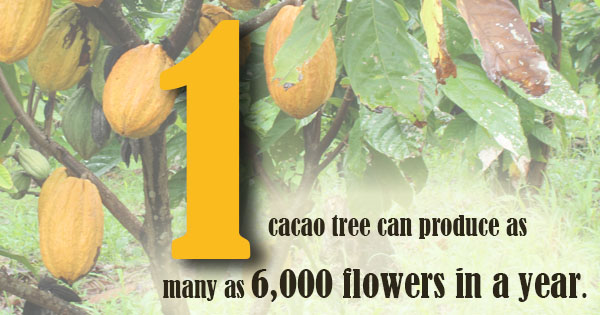
Chocolate Fermentation is the Secret
What makes chocolate so delicious? If you ask a culinary expert or everyday chocoholic, they might tell you it's the sensuous layering of chocolate or the complexity of flavor. While you may not have a complex flavor experience when eating any old bar of chocolate, the best dark chocolate and other organic dark chocolates contain specific flavor notes, reminiscent of the cocoa it's derived from. They're fruity, bitter, aromatic and contain so many more flavors.
So where does this flavor come from? Similar to coffee, organic dark chocolate gets its flavor from beans that are dry roasted and processed into your favorite chocolate treats. Specifically, chocolate comes from the cacao tree, which takes six to eight years to bloom and bear fruit. But once it does, one cacao tree can produce as many as 6,000 flowers in a year.
Interestingly, research suggests that it’s not just the cacao fruit itself that contributes to these flavors. The key lies in the fermentation process of chocolate, during which cacao beans undergo a transformation that enhances their flavor complexity and uniqueness.
Fermentation is a common process for many of the foods we frequently enjoy, including coffee, bread, wine, pickles, beer and kombucha. Fermentation is a metabolic process that converts sugar into gasses, yeast and bacteria. Fermentation provides that characteristically tart flavor in San Francisco sourdough bread, and sets grape juice apart from a glass of wine.
According to chocolate consultant Clay Gordon, "the influence of fermentation is huge." First, his company's contracted farmers collect fresh cacao pods, breaking the fruit open. Then, they ferment the pulp and seeds (beans) at a central plant. According to Gordon, the process gives him more control, allowing him to "reliably get six different flavor profiles by varying fermentation and drying. You can get flavors that are fruity and bright or leathery and tobacco-y just by controlling the post harvest processing."
When cacao beans are fermented, the fruit pulp is broken down and the sugars are turned into what food scientists dub "flavor precursors."
“When you roast the bean, these are what generate the flavors we talk about in chocolate,” says Gordon.
Perhaps the next time you take a bite into a bar of pure dark chocolate or pareve chocolate, you'll appreciate the complexity and science of the process that produced it.
What is Enzymatic Cacao Production?
Did you know that you can add enzymes to chocolate during the manufacturing process that help bring out the classic fudge like chocolate flavor?
In traditional raw cacao to chocolate making, fermentation is a step in making great chocolate because that's when the recognized and loved chocolate flavor develops. The fermentation process is time consuming and requires careful attention however.
Fermentation Process versus Enzymatic Process
By using enzymatic polypeptides the traditional process of fermentation of cacao can be shortened or eliminated. In this manufacturing method of using enzymes, cacao nibs are soaked in an enzymatic polypeptide compound. During cacao processing a chocolate flavor develops even though the cacao has not been fermented.
Using polypeptide enzymes gives a manufacturer more control over the cacao flavor in house. It also allows the farmers to bring raw cacao more quickly to market because fermentation has been skipped. Fermentation of the raw cacao is a difficult and slow process that requires a knowledgeable and experienced person to manage.
The enzymatic method definitely has a place in raw cacao production and in some ways can be preferable when considering all factors if there are untrained farmers or if the cocoa beans need to have a fully developed fudge like flavor etc.
Santa Barbara Chocolate prefers to follow more traditional steps of cocoa fermentation in our cocoa bean sourcing for our chocolate couverture production.
Cocoa fermentation is our preferred method for flavor profile
"Santa Barbara Chocolate values the traditional methods of chocolate fermentation used by ancient Meso-American cultures, ensuring that every batch retains its exquisite quality. We believe this approach is what makes the chocolate truly special."
-Master Chocolatier
Santa Barbara Chocolate

